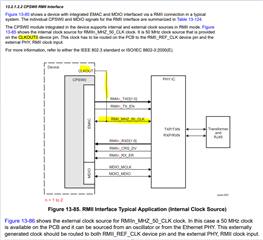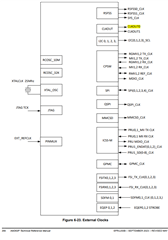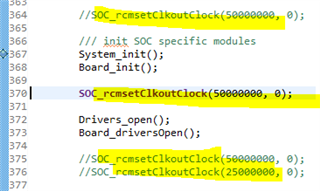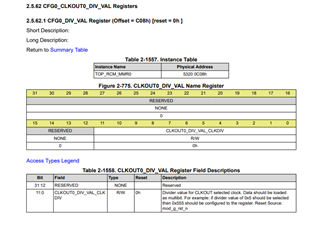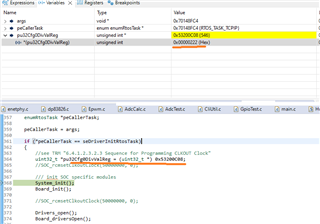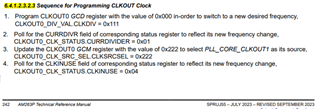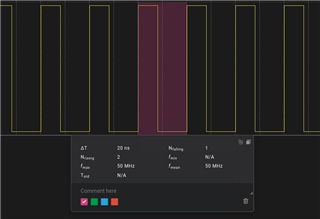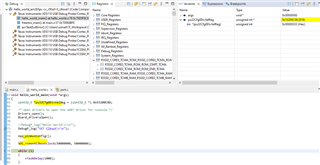Other Parts Discussed in Thread: SYSCONFIG
Tool/software:
For a custom PCB that includes multiple DP83826 PHYs I would like to use that AM263Px.CLKOUT0 pin as the DP83826.XI (clock input).
DP83826 Datasheet Excerpt1:
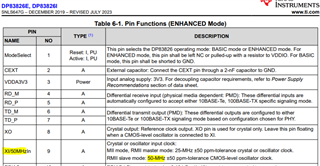
DP83826 Datasheet Excerpt2
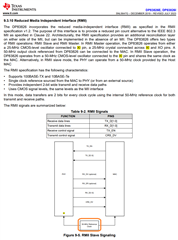
However, it is not clear how I can configure AM263Px.CLKOUT0 to output the 50MHz clock needed.
a)
It seems like there may be a way to configure this through SysConfig through:
{BUILD_CONFIG_OUTPUT_PATH}/syscfg/ti_power_clock_config.c
However, I do not see where in the GUI to configure this.
Is it possible to configure the clock through SysConfig?
b)
Or can it by done through a driver API call? is this API call what I’m looking for?
void SOC_rcmCoreApllHSDivConfig(SOC_RcmPllFoutFreqId outFreqId, SOC_RcmPllHsDivOutConfig *hsDivCfg)
… defined here:
${COM_TI_MCU_PLUS_SDK_AM263PX_INSTALL_DIR}\source\drivers\soc\am263px\soc_rcm.c
c)
I also see what looks like the register addresses that may control CLKOUT0 in file:
${COM_TI_MCU_PLUS_SDK_AM263PX_INSTALL_DIR}\\source\drivers\hw_include\am263px\cslr_iomux.h
.. sections:
/* CLKOUT0_CFG_REG */
/* PLL_PER_HSDIVIDER_CLKOUT0 */
Is using direct register writes an option?
Please advise.



